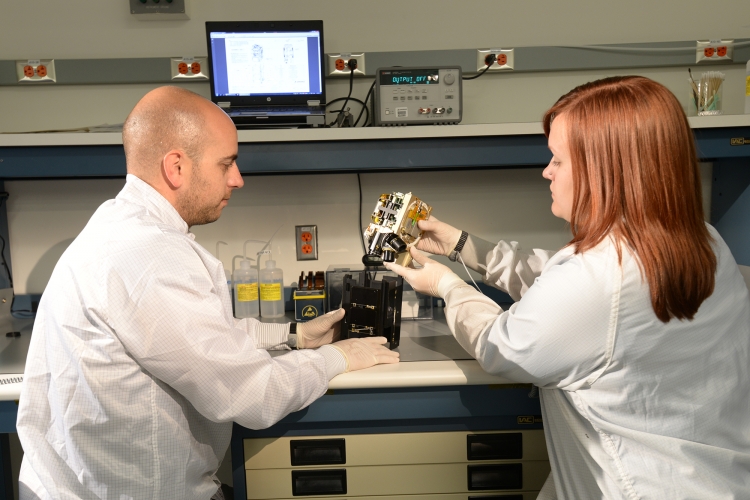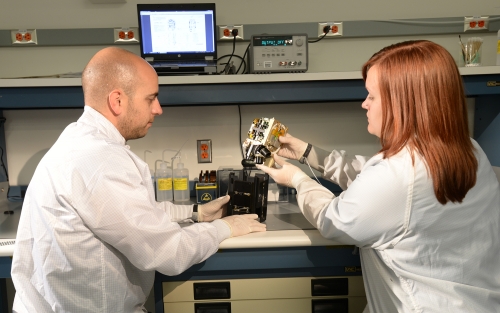The Optical Communications and Sensor Demonstration (OCSD) mission, funded by NASA, launched two 1.5-unit AeroCubes on Nov. 12, 2017 as secondary payloads on a resupply mission to the International Space Station (ISS). Their goal is to demonstrate high-speed optical (laser) communications and proximity operations.
“These CubeSats are really breaking ground and we are excited to see where this research will lead in several different technologies and mission areas,” said Dr. Siegfried Janson, one of the principal investigators for OCSD. He and the Aerospace small satellite team designed and built the OCSD spacecraft, and are now taking them through their paces on orbit.
Video: OCSD Demos Laser Comms and Proximity Ops
Top-Notch Communication
To demonstrate the laser comm system, the OCSD CubeSats are transmitting to a telescope in Aerospace’s El Segundo, Calif., laboratories. The team has received data from the satellites at a rate of 100 Mbps, but expects to exceed that soon.
“Space-to-ground optical communications from a free-flying CubeSat has never been done before, and we’re excited to be involved in this demonstration,” said Todd Rose, the OCSD optical communications lead.
The laser is hard-mounted to each OCSD satellite, which means that in order to point the laser, the entire satellite must rotate. This unique design simplifies the laser comm system since beam steering mirrors are not required, but the satellite now has to accurately point while downloading data.
The team developed a highly accurate attitude control system, including tiny star trackers, which allow the spacecraft to point to an accuracy of 0.025 degrees, 40 times better than was previously possible for this size satellite.
Proximity Operations
The OCSD satellites also completed a proximity maneuver as part of their technology demonstration. The spacecraft, which are zipping around the Earth at a speed of about 5 miles per second, were able to approach each other until they were only 20 feet apart.
The OCSD pair determined where they are in relation to each other by using on-board GPS receivers. Inexpensive cameras, beacons, and laser rangefinders will be used in upcoming proximity demonstrations.
To control their movement, they have a novel propulsion system, designed at Aerospace, that uses water as a propellant. The CubeSat has a thermal design that keeps the water from freezing, and then the thrusters spew it out as steam when propulsion is required.
Normally, secondary spacecraft on an ISS supply mission are not allowed to have a propulsion system, to avoid causing problems for the main mission. OCSD was granted an exception, however, due to the safe nature of the water propellant.
Future Applications
The technology flown on OCSD is exciting and innovative. The laser communication demonstration is merely the beginning. Once the concept has been tested and verified on orbit, future missions could make minor improvements to OCSD’s technology, which would allow them to download gigabits of data per second.
Also, if a CubeSat can be positioned confidently and accurately near other objects in space, it could be used to inspect or service other satellites. It could also fly in formation with other CubeSats to accomplish larger missions.
“Providing CubeSats with high-speed laser comms and advanced maneuvering capability creates some interesting opportunities for our next generation missions that wouldn’t have been possible a few years ago,” said OCSD program manager Darren Rowen.
The OCSD mission is supported by NASA’s Small Spacecraft Technology Program. Funding for the program comes from the Space Technology Mission Directorate at NASA Headquarters.


